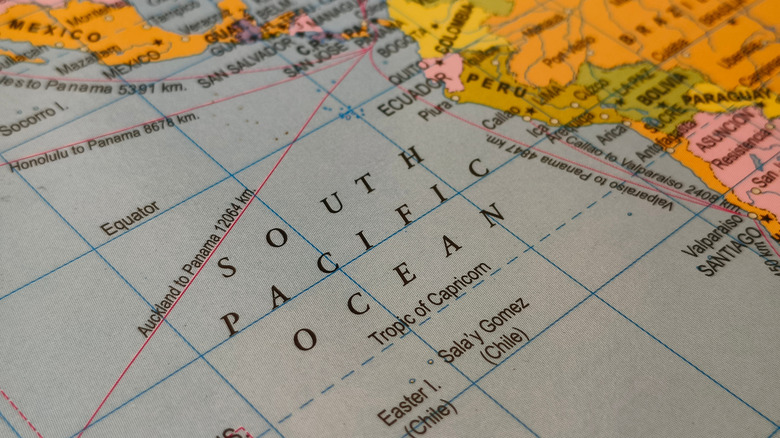Why Most Flights Avoid Flying Over The South Pacific
On a flat map, flying straight over the South Pacific might look like a direct path between continents. But Earth is round, and a curved route (often hugging landmasses) is actually shorter. This is why flights between South America and Australia or between the U.S. and Southeast Asia usually arc northward or along the Pacific Rim. What looks like a detour is often the shortest and most fuel-efficient path.
The South Pacific is enormous — it's the most remote part of the planet. It stretches across more than 64 million square miles with virtually no infrastructure in between. Many long-haul flights use routes that prioritize proximity to airports in case of an emergency. The further you get into the South Pacific, the fewer options there are for alternate airports or refueling points. That's a major risk factor commercial airlines want to avoid.
There's also the issue of ETOPS (Extended-range Twin-engine Operational Performance Standards), which limits how far twin-engine aircraft can be from a diversion airport. Even with modern ETOPS ratings up to 330 minutes, the vastness of the South Pacific pushes the boundary.
Emergency landings aren't an option out here
Airlines build their flight plans around safety contingencies, especially when it comes to potential emergency landings (the worst of which is a deadstick landing). That's why most commercial routes stay within a couple of hours of a diversion airport. If something goes wrong mid-flight — medical emergency, engine issue, decompression — pilots need a nearby runway. In the South Pacific, suitable airports are few and far between. That isolation is the biggest red flag for airline route planners. Pray you never have to hear the dreaded 'Mayday.'
Rescue operations in this part of the world are also difficult. If an aircraft had to emergency land in open water, it would be a daunting task to locate and reach survivors. That risk is a strong deterrent, especially when safer overland or coastal routes are available. Even though long-haul planes are reliable and overwater certified, the South Pacific's isolation remains a worst-case scenario planners work to avoid.
Weather and wind make it worse
On top of its remoteness, the South Pacific is home to highly unpredictable weather. This includes frequent thunderstorms, intense winds, and turbulent jet streams that can drastically affect flight safety and fuel efficiency. Airlines prefer to route flights where conditions are more stable and predictable. The Pacific, particularly the South, doesn't offer that.
Flying into headwinds increases fuel burn. Tailwinds help, but only if you can time them right. Jet streams in this region are also a concern, especially during the Southern Hemisphere's summer and cyclone season. Turbulence here can be far more intense than over land. That's another reason airlines avoid unnecessary exposure to this region, especially for passenger comfort and fuel efficiency. But that doesn't mean pilots don't know how to handle nature's challenges.
In the end, flying over the South Pacific is doable — it just isn't worth the added complexity for most routes. If a safer, shorter, and cheaper alternative exists, commercial carriers will take it every time.


